The bioluminescent forest rain phenomenon is one of nature’s rarest and most magical secrets. Found only in specific rainforests, woodlands, and hidden groves, this natural wonder transforms ordinary landscapes into glowing dreamscapes after heavy rainfall. Fungi, mosses, and microorganisms react to moisture, producing a soft, mystical glow that can make an entire forest floor shimmer under the night sky.
For eco-travelers, photographers, and adventurers searching for experiences beyond the ordinary, witnessing a forest that glows after rain is nothing short of stepping into a living fairytale. These glowing ecosystems highlight the delicate balance of biodiversity and are considered some of the most underrated natural phenomena in the world.
🌧️ What Is the Bioluminescent Forest Rain Phenomenon?
When people hear “bioluminescence,” they often think of glowing plankton in tropical seas. But on land, bioluminescence in forests after rain is just as extraordinary. Certain species of fungi—like Mycena chlorophos and Panellus stipticus—emit light when moisture levels spike. This glow is not just aesthetic; it’s believed to attract insects that help with spore dispersal.
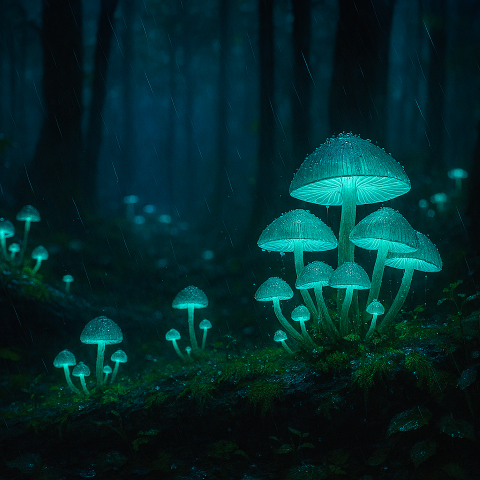
Scientists refer to this as “foxfire” or “fairy fire,” but travelers who’ve seen it describe it as walking through a real-life scene from Avatar.
🌍 Where Can You See Bioluminescent Forest Rain?
1. Amazon Rainforest, Brazil
The Amazon’s humid climate creates the perfect setting for glowing fungi. After heavy rain, certain patches of forest glow brightly, especially in areas untouched by human activity.
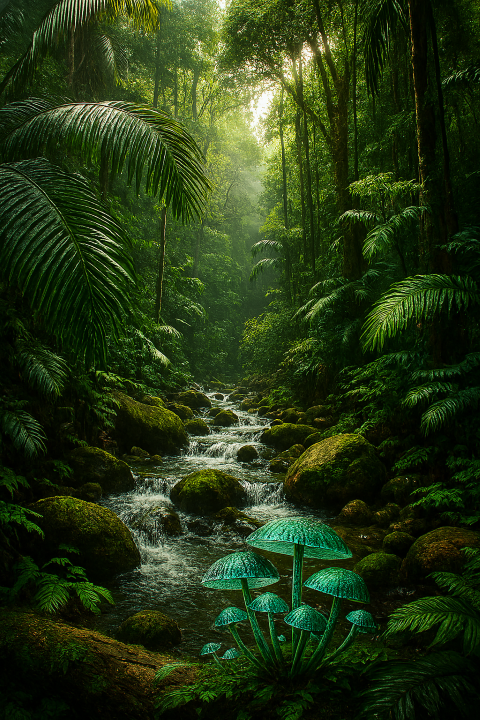
2. Western Ghats, India
During India’s monsoon season, trekking trails in Maharashtra transform into glowing paths with thousands of tiny luminous fungi.
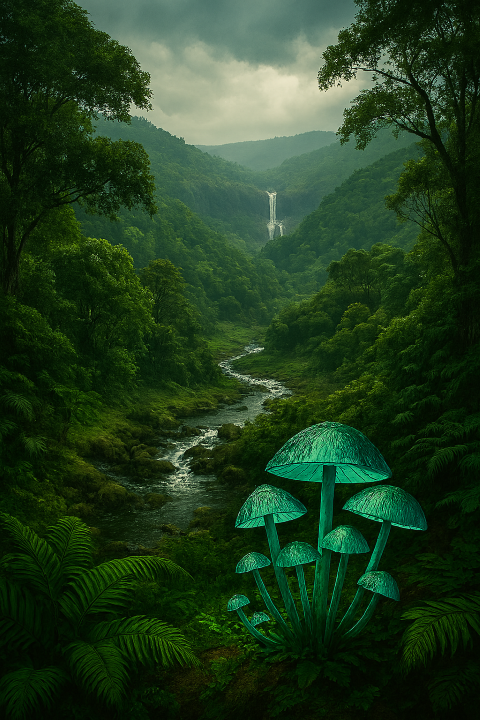
3. Kyoto & Shikoku Forests, Japan
In summer, Japan’s forests reveal glowing mushrooms that have inspired centuries of folklore about forest spirits.
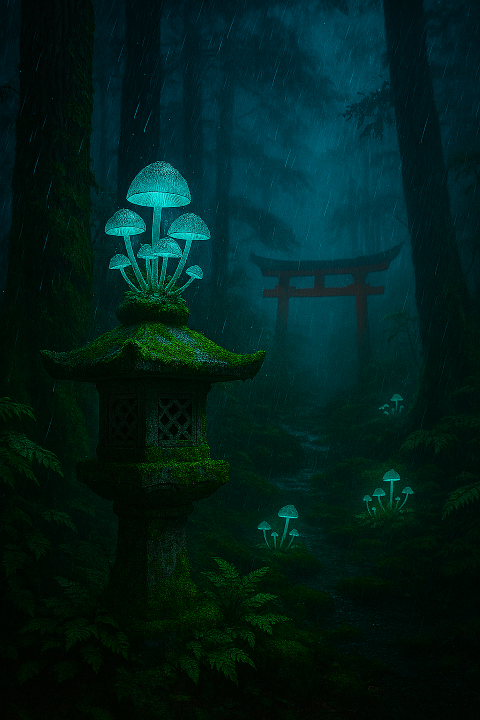
4. Appalachian Trails, USA
In North America, explorers often witness “foxfire”—the soft glow of fungi after rain—in Appalachian forests.
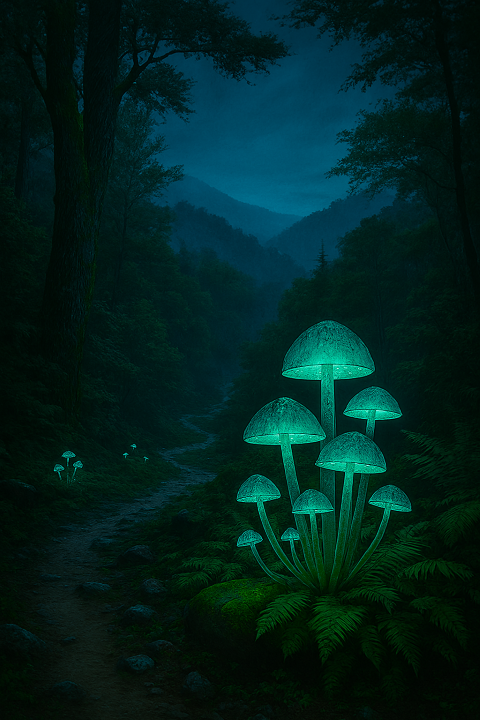
🔬 The Science Behind Bioluminescent Forest Rain
- Moisture & Humidity: Rain creates the damp conditions fungi need to thrive.
- Mycelium Activity: Underground fungal networks release glowing spores.
- Ecological Purpose: Some scientists believe the glow attracts insects to spread spores.
The Science Behind the Glow
The bioluminescent forest rain glow comes from a chemical reaction known as luciferin oxidation. When luciferin (a light-emitting compound) reacts with oxygen, aided by an enzyme called luciferase, light is produced. Unlike fire or artificial light, this glow emits no heat—making it perfectly safe and sustainable.
Interestingly, the light usually peaks at wavelengths that insects can see more clearly than humans, showing the deep connection between bioluminescence and forest ecology.
🌱 Why You Should Experience It
- A Rare Natural Wonder – Few travelers get to see bioluminescent forest rain.
- Eco-Tourism Value – Encourages sustainable tourism in lesser-known destinations.
- Cultural Significance – Indigenous tribes often link the glow to ancestral spirits.
Underrated Things to Do in Lisbon Off the Tourist Path
✨ Tips for Seeing Bioluminescent Forest Rain
- Visit during the rainy season or right after heavy downpours.
- Avoid using bright lights—your eyes need to adjust to the darkness.
- Travel with a local guide for safety and insider knowledge.
- Bring a tripod camera for long-exposure photography.
❓ FAQs About Bioluminescent Forest Rain
Q1: Can you see bioluminescent forest rain year-round?
No, it usually occurs in humid rainy seasons.
Q2: Is bioluminescent fungi safe to touch?
Some species are harmless, while others may be toxic—best to admire without touching.
Q3: Can I photograph it easily?
A DSLR or mirrorless camera with long-exposure settings is recommended.
🌟 Traveler Advise Bioluminescent Forest Rain
The bioluminescent forest rain phenomenon is more than just a rare natural event—it’s a reminder of how much mystery still exists in nature. For those seeking adventure beyond the usual tourist trails, chasing glowing forests after rainfall is an unforgettable experience.
Protecting these habitats is crucial, not just for scientists, but for future generations of travelers who dream of walking through forests lit by nature’s hidden lanterns.

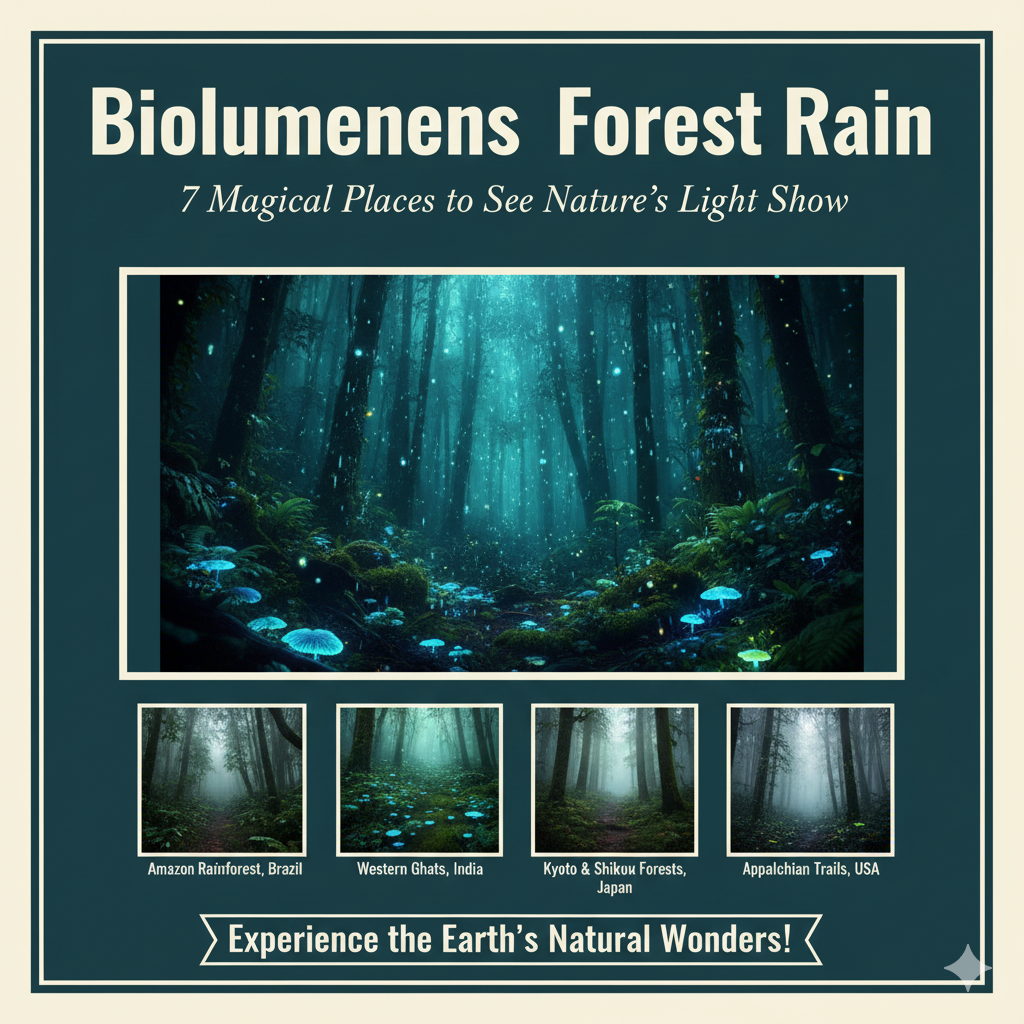


Pingback: 7 Magical Singing Rivers & Acoustic Canyons You’ll Love
Pingback: 7 Stunning Sandbars That Appear at Low Tide and Vanish